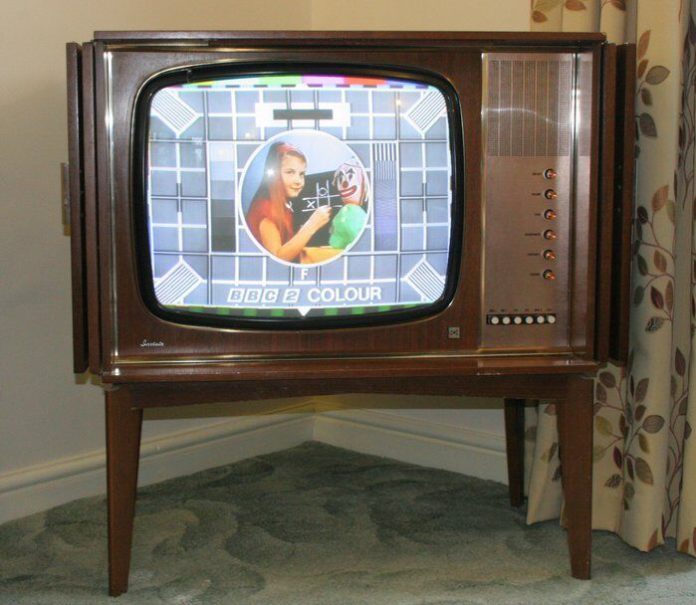
NOBODY ever gives it a thought these days.
Switch on your television and you’re greeted by a colour picture and in many cases in stunning HD quality.
Many reading this will probably still remember watching the broadcast that took television into the homes of many, namely the Queen’s Coronation in 1953.
Fourteen years later, on 1st July 1967, saw the UK launching the first colour TV service in Europe using the Phase Alternating Line (PAL) system with the first broadcast being the Wimbledon tennis championships on BBC2.
Colour broadcasting in those early years was restricted to BBC2 only and it was a further two years down the line, on 15th November 1969, when colour broadcasting arrived on the remaining two channels, BBC1 and ITV, which were more popular channels than BBC2.
Colour could only be received in the London Weekend Television/Thames region, ATV (Midlands), Granada (North-West) and Yorkshire TV regions.
ITV’s first colour programmes in Scotland appeared on 13th December 1969 in Central Scotland; in Wales on 6th April 1970 in South Wales; and in Northern Ireland on 14th September 1970 in the eastern parts.
Colour TV licences were introduced on 1st January 1968; costing £10 this was twice the price of the standard £5 black and white TV licence.
Due to the lack of colour production facilities, the majority of early colour programming consisted of outside broadcasts and movies until the conversion of Television Centre.
The initial service was live from Wimbledon, preceded for a few weeks by colour broadcasting of certain shows, colour Trade Test films and Test Card F with its centre photo of Carol Hersee, the daughter of the engineer who designed it.
At this time it was estimated that there were around 100,000 colour sets. At the time that colour TV was introduced on BBC1 and ITV in 1969, it was estimated that there were 200,000 colour sets in circulation and it was not until 1975 that colour sets were finally outselling black and white, which was mainly due to the high price of the early colour sets.
Colour receivers were almost as expensive in real terms as the early black and white sets had been; the monthly rental for a large-screen receiver was £8.
In March 1969, there were only 100,000 colour TV sets in use; by the end of 1969 this had doubled to 200,000; and by 1972 there were 1.6 million. The BBC and ITV sought programmes that could exploit this new medium of colour television.
Major sporting events were linked to colour television from the very start of the technology being made available. Snooker, with its rainbow of different-coloured balls, was ideal.
On July 23rd 1969, BBC2’s Pot Black was born, a series of non-ranking snooker tournaments which ran until 1986.
The first official colour programme on BBC1 was a concert by Petula Clark from the Royal Albert Hall, London, broadcast at midnight on 14th/15th November, 1969. This might seem an odd hour to launch a colour service, but is explained by the fact that the Postmaster General’s colour broadcasting licence began at exactly this time.
The first official colour programme on ITV was a Royal Auto Club Road Report at 9:30 am, followed at 9:35 am by The Growing Summer, London WeekendTelevision’s first colour production for children, starring Wendy Hiller.
This was followed at 11:00 am by Thunderbirds. The episode was ‘City of Fire’, which also became the first programme to feature a colour advertisement, for Birds Eye peas.








